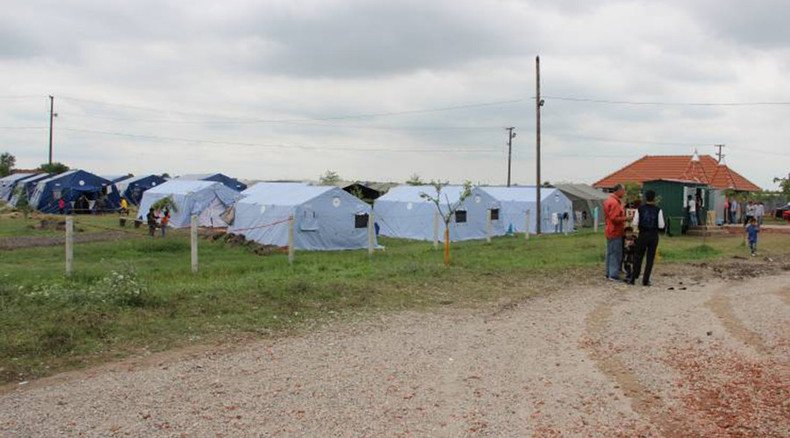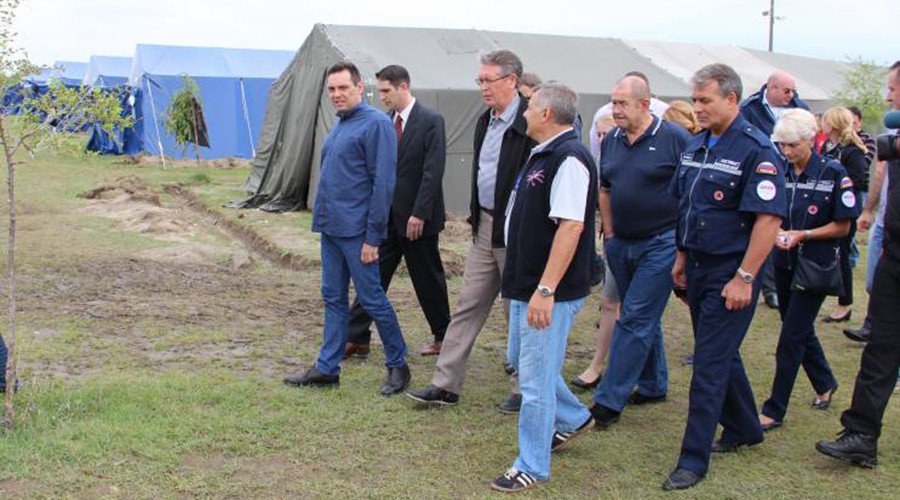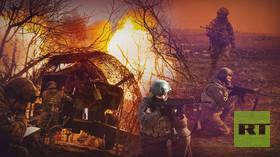Russia assists Serbia with EU-bound refugee influx

Thousands of migrants fleeing conflict zones in the Middle East and North Africa are finding a transit shelter in Serbia, made possible by the Russian-Serbian Humanitarian Center (RSHC), which throughout the year has donated vital supplies to those in need.
While the EU struggles to provide accommodation for those searching for a better future, Russia took it upon itself to help the Balkan nation build favorable living conditions for at least some of the 89,000 refugees passing through Serbia this year on their way to western Europe.
So far, in August alone, some 23,000 refugees from North Africa and the Middle East have sought temporary refuge on Serbian-Hungarian and Serbian-Macedonian borders, as thousands hope to eventually be welcomed by the EU.

As migrant numbers begin to swell, those seeking temporary accommodation have found a roof over their heads and a hearty meal in migrant reception camps which are currently able to cater to the needs of some 1,400 migrants. Dignitaries have assessed the Russian contribution to the interim reception center near Kanjiza in northern Serbia and have welcomed Russian support in similar centers around the country.
Thousands of migrants taking the “Balkan route” to eestern Europe end up arriving in impoverished district of Preshevo in southern Serbia near Kosovo, while others end up in Kanjiza in northern Serbia, next to Hungary.
While Russian aid continues, RSHC has already delivered 39 tents, 30 heating stoves, 2 diesel power plants, blankets, folding beds, sofa sets furniture and metal ware to these two camps.
Serbian authorities acknowledged that the Russian contribution in organizing the migrant camps was the most quick and effective compared to other organizations, the RSHC said in a press release. Russia’s Ambassador to Serbia, visiting the Kanjiza migrant camp, has meanwhile called his country’s effort to help accommodate migrants a “gesture of goodwill.”

Russia is helping Serbia within the framework of a bilateral intergovernmental agreement, so the aid can be extended if necessary.
Meanwhile on the receiving end, Hungarian authorities have moved to curb the migrant flow, recently announcing a plan to build a four-meter wall along 175 kilometers of their frontier with Serbia. Just this week, Hungary announced that it would send thousands of policemen to its border with Serbia to prevent migrants from crossing illegally into the EU’s Schengen zone.
More than 100,000 migrants have arrived in Hungary since the start of the year, underlining the Hungarian authorities’ insistence that their reception infrastructure cannot cope with such a massive influx indefinitely.
In Macedonia, authorities are also trying to curb the “transit” flow of refugees which has grown to nearly 2,000 a day, but so far with a little success.
A large group of migrants, who have been prevented from entering Macedonia from Greece for the past week, overwhelmed border guards on Saturday, causing multiple injuries in the process, after police attempted to limit the inflow and allow only the most vulnerable – women and children – to pass the checkpoint.
LISTEN MORE:













